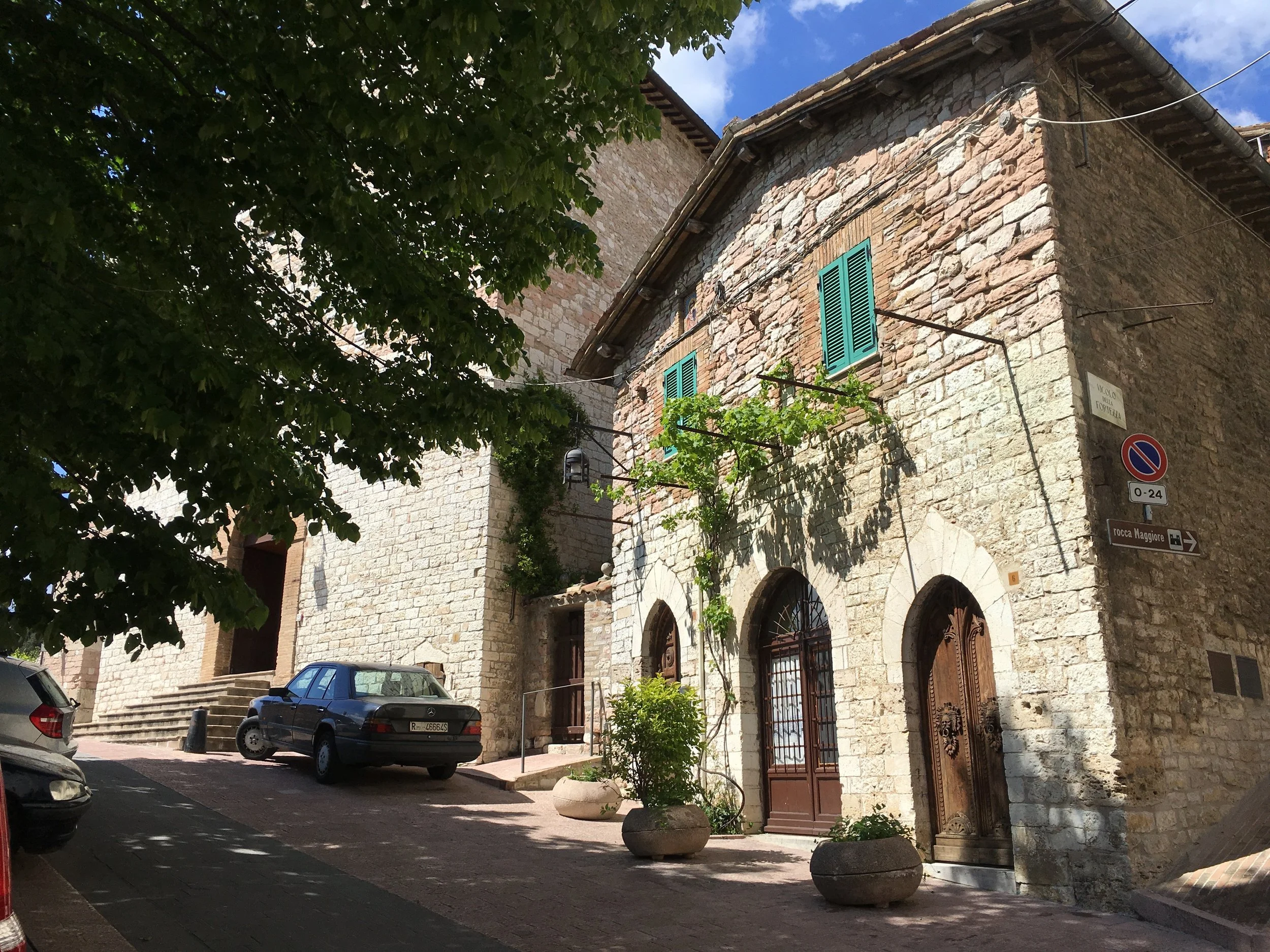
Arte Studio Ginestrelle
A small artist residency set within the historic town of Assisi, Italy, a UNESCO World Heritage Site. Marina Merli (Art Historian and Director), developed the residency program for international artists and writers in 2008. Participating artists are invited to exhibit in the Annual International Contemporary Art Exhibitions at the Art Gallery, Le Logge, proudly supported by the Council of Assisi, through the provision of the prestigious historic gallery (from the XIII Century).
Photo: Arte Studio Ginestrelle, Writers’s Residency, Assisi, Italy
Chiesa di San Giacomo de Muro Rupto – Memory, 2021, Watercolour, ink and gauche on paper, 18 x 24 cm
Arte Studio Ginestrella, 2021
Chiesa di San Giacomo de Muro Rupto is a small Romanesque church dates from the 11th century and existed during St. Francis’s life-time. It is called Chiesa San Giacomo de Muro Rupto because it is located next to the walls of the city in ruins (at the time of it’s construction).
This church is a unique asymmetric structure, which suggests the form evolved in response to the ruins (or mason structures) of the old city. The rough dark simple interior wraps the visitor with a sense of the centuries, through the decay and patinaed stone, in a minimal but powerful architectural space. It is a quiet and moving church in Assisi; one that is off the beaten path.
Invited International Exhibition, Art Gallery Le Logge, Piazza del Comune Assisi, Italy, September 2021
Chiesa Santo Stefano: Interior & Exterior, 2019, Watercolour, ink and gauche on paper, 20 x 20 cm each
Arte Studio Ginestrella, 2019
Chiesa Santo Stefano (The Church of St. Stephen) is one of my favorite architectural spaces in Assisi. This small Romanesque church also dates from the 11th century, during St. Francis’ life-time. According to legend, “on October 3rd, 1226, at the hour of vespers, the bells of St. Stephen started ringing by themselves to announce the death of St. Francis, in the church of the Porziuncola.”[1] In medieval documents Santo Stefano was mentioned for the first time in 1229, and typifies local Umbrian Romanesque construction with the use of pink stone and lancet brick arches supporting the timber framed roof. The remaining fresco fragments in the interior date from the 14th century. It is a quiet and moving church in Assisi, especially as one is mindful that Francis himself might have prayed there.
[1] Cipiciani, Maria Letizia, Assisi 1182. Francis’s Home, 2014.
Invited International Exhibition, Art Gallery Le Logge, Piazza del Comune Assisi, Italy, September 2019
Piazza Del Vescovado at Night, 2018, Watercolor on paper, 8.25 x 5 inches
Via San Gregorio at Noon, 2018, Watercolor on paper, 5 x 8 ¼ inches
Arte Studio Ginestrella, 2018
I have traveled to Assisi with students from the US, as an artist in residency and firstly as a pilgrim. Every time I return to Assisi, I spend time drawing interior and exterior spaces of the Umbrian hillside town while reflecting on the powerful stories of Francis, the history of spaces, and people I encounter. Assisi is a rich and complex tapestry that mingles stories of the past with present encounters through the spaces of the town and buildings.
Invited International Exhibition, Art Gallery Le Logge, Piazza del Comune Assisi, Italy, September 2018